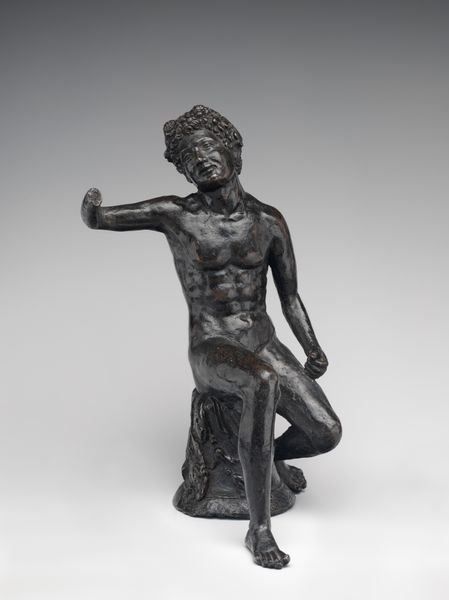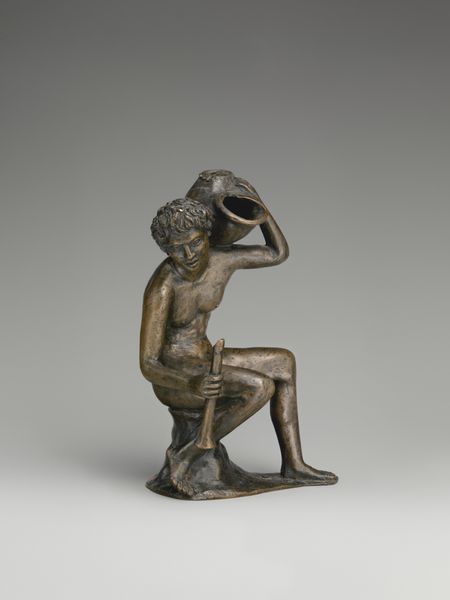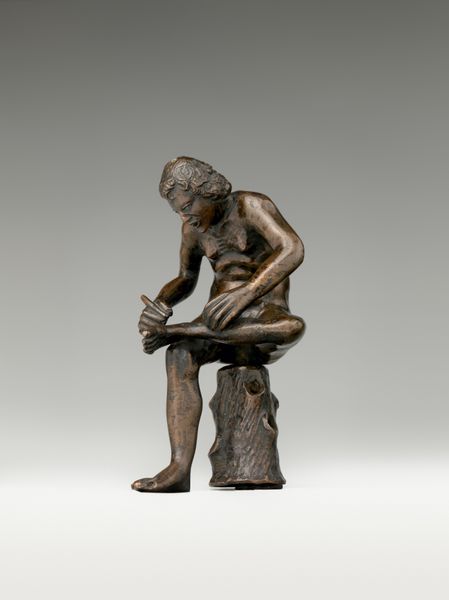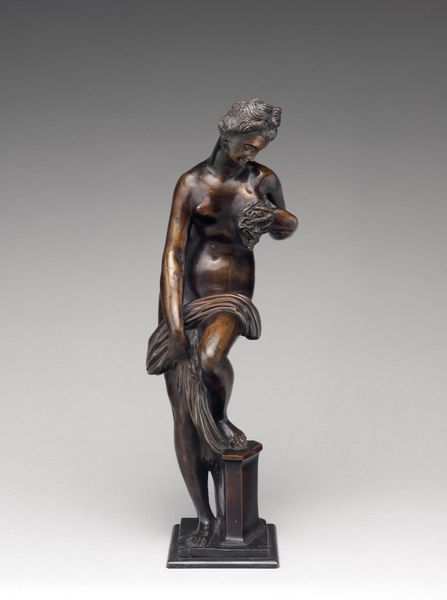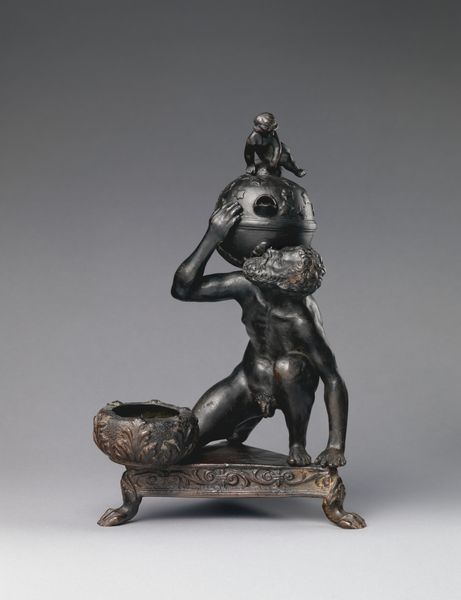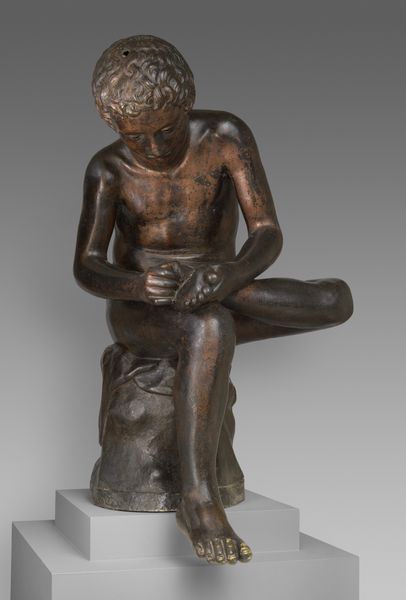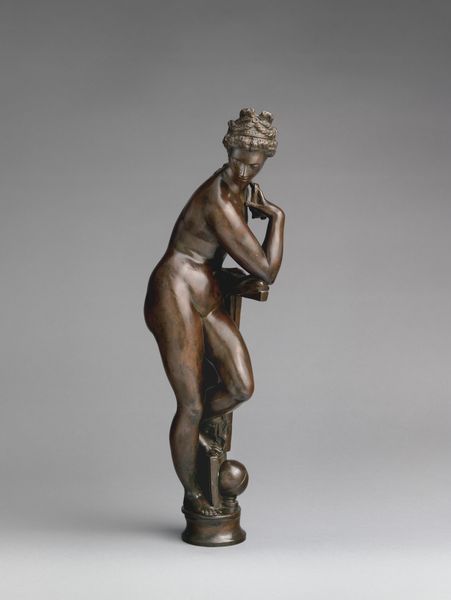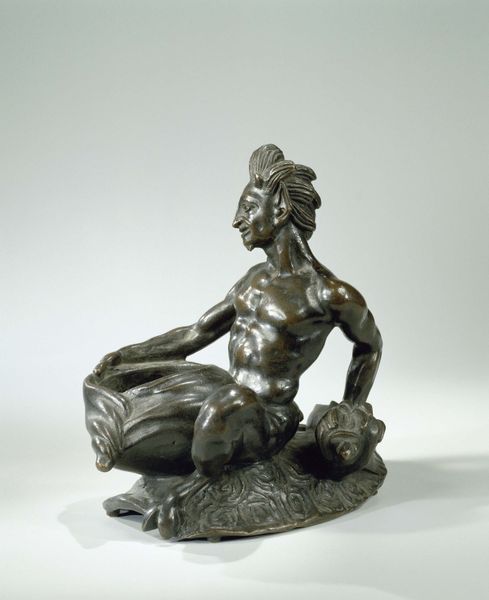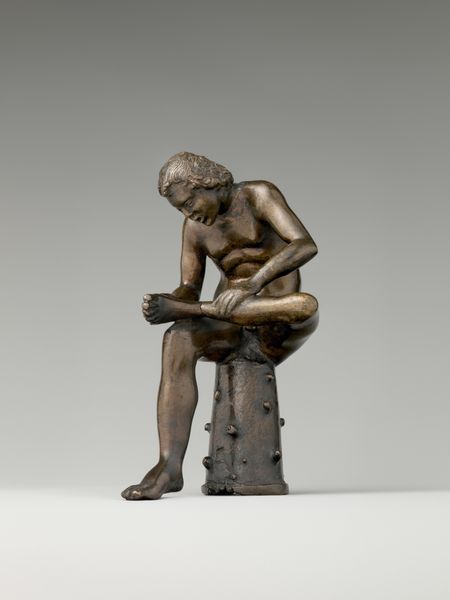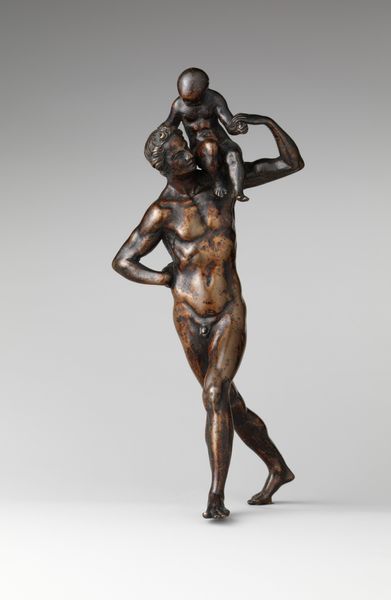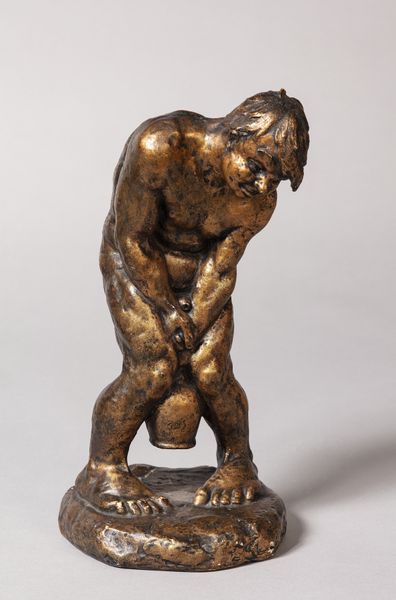
bronze, sculpture
#
bronze
#
mannerism
#
figuration
#
ancient-mediterranean
#
sculpture
#
decorative-art
Dimensions: Overall (confirmed): 8 1/4 × 4 5/8 × 6 1/2 in. (21 × 11.7 × 16.5 cm)
Copyright: Public Domain
Andrea Riccio crafted this bronze sculpture of a seated satyr in the early 16th century. The satyr, a creature of the forest, embodies primal instincts and untamed nature, half-man, half-goat, with horns and hooves marking his departure from human civility. He holds a shell, an ancient symbol of pilgrimage and renewal, but also of Venus, the goddess of love, further connecting him to the sensual aspects of nature. This dichotomy, the tension between the earthly and the divine, echoes through centuries. The satyr's posture, relaxed yet alert, reminds us of similar figures in classical bacchanals, scenes of ecstatic revelry. Consider how this figure parallels Dionysus himself, the god of wine and liberation, often depicted with similar attributes. The satyr's enduring appeal lies in his embodiment of the subconscious, the id as Freud would say – a realm of instinctual desires that both attracts and repels. This image reflects our ongoing struggle to reconcile our primal selves with the demands of civilization. The satyr, therefore, remains a potent symbol, continually resurfacing in art, literature, and our collective imagination.
Comments
No comments
Be the first to comment and join the conversation on the ultimate creative platform.
